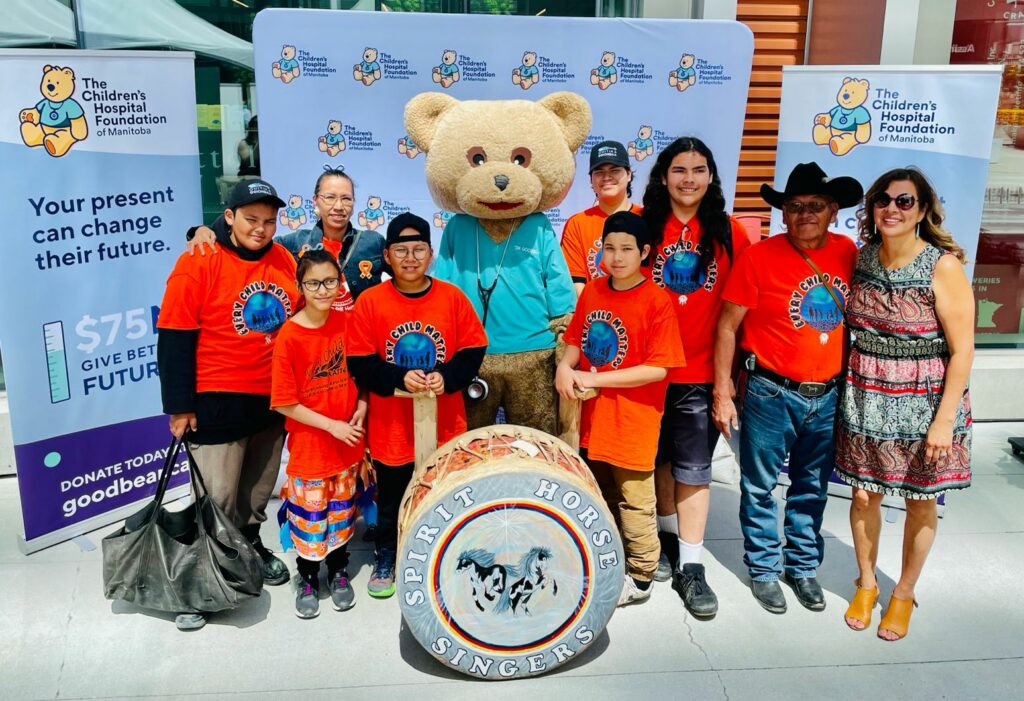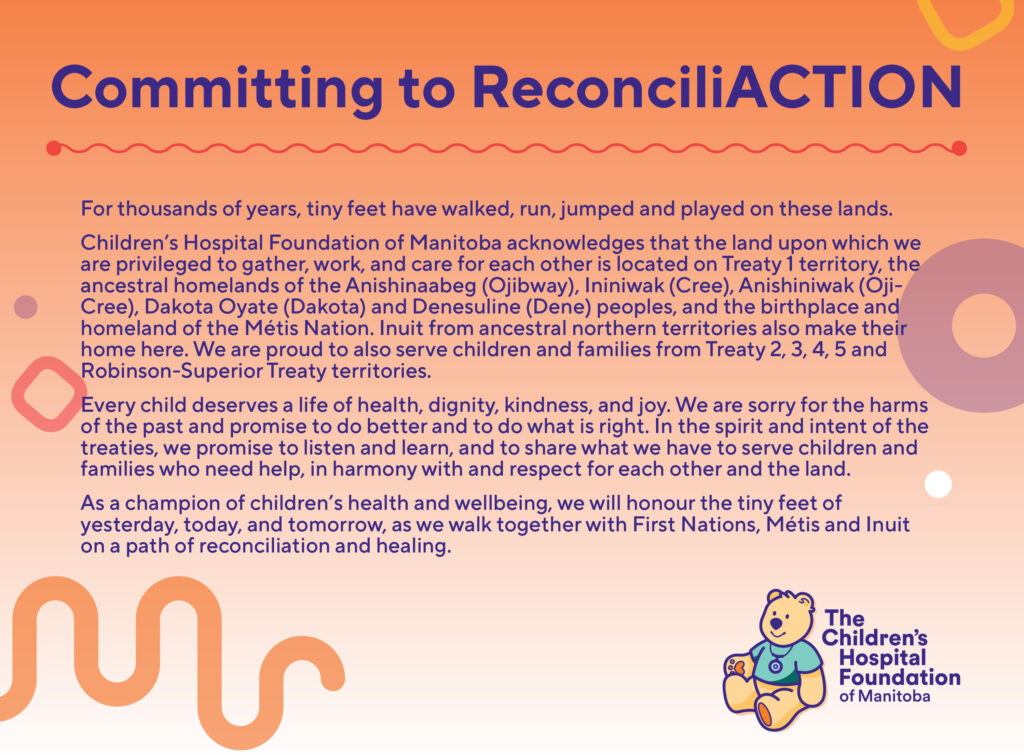September 29, 2022
Our Foundation has been on a journey with the Indigenous community we serve. We work closely and collaboratively with many wonderful people within the community to gain knowledge and engage in meaningful discussions about how we can take action – now and in future – to effect change within the health-care system for Indigenous patients. In Manitoba, Indigenous children are three to five times more likely to be affected by diseases or conditions that need ongoing care, which often means they and their families visit HSC Winnipeg Children’s Hospital for years. Up to 60 per cent of the kids served by the hospital are from Indigenous communities across Manitoba, Nunavut, and Northern Ontario.
Rebecca Chartrand, B.Ed. M.Ed, Anishinaabe Metis from Treaty Territory #4 in Manitoba and the owner of Indigenous Strategy, helped us form the Indigenous Advisory Circle (IAC) to the Foundation, a group of leaders from First Nations, Métis and Inuit communities across Manitoba who generously share their wisdom and counsel, including the importance of Indigenous worldviews within the hospital and the projects Foundation donors support.

I recently sat down with Rebecca to learn more about her inspiration for supporting the Foundation and what she believes can be achieved in reconciliation in the coming years:
S: What inspired you to be part of the Children’s Hospital Foundation of Manitoba Board and help develop the Indigenous Advisory Committee?
R: Once I learned more about the work of the Children’s Hospital Foundation, in addition to learning about the high number of Indigenous children who require care from the Children’s Hospital, I knew I needed to get involved. I wanted to help and make a difference. From a historical lens, there has been huge mistrust between Indigenous peoples and western institutions, which includes education institutions and hospitals. We know from the Truth and Reconciliation Commission of Canada that there is still much bridge building work to be done to undo the harms done to children in residential school. That’s why this work is important. It’s about creating and maintaining a culture of caring and approaching the challenges and aspirations of the Foundation together. To date we have accomplished so much, bridging between the Indigenous community and the work being carried out at the Children’s Hospital Foundation of Manitoba. We’ve accomplished a great deal because we keep children at the centre of our conversations and what we do. This is an all-around win-win partnership, and I am grateful to play a contributing role.
S: Why ReconciliACTION?
R: Because we need action – now. To achieve reconciliation, we need to look at the hard data that tells us why reconciliation is needed in Canada. In Manitoba alone we have the highest child poverty rates than anywhere else in Canada. We also have a very high number of remote isolated communities in Manitoba that continue to affect the high cost of food and in turn impact higher rates of diabetes and other health issues that impact children. Reconciliation action urges us to look at these issues and to respond. What better way than to support children through research and services at the Children’s Hospital.
S: What can the ordinary person do to be part of reconciliation?
R: Everybody can get involved whether you work at the hospital, or you sit on the board, or work as a staff member, or are a parent, or a donor to the Foundation. We need to make room for understanding how we’ve arrived at today. There are many children that need our support and care in Manitoba. Our work at the Children’s Hospital ensures that we raise funds for all our children and want to ensure that children get the best care with the best equipment and resources that can be afforded. Reconciliation is also about building relationships, that is the common denominator in all of this and everything under the umbrella of reconciliation. We can start to make space for learning and for new relationships with Indigenous peoples… that’s an easy start, and it’s free and mutually beneficial because we are growing community together.
S: In 50 years, because of reconciliation efforts today, what do you hope will have changed (your vision)?
R: If we dedicate a little bit of time to reconciliation today, in 50 years will see increased wellness for individuals, for families, for community, and for our nations. This is a beautiful vision and one that was conceptualized at the signing of the Canadian Indian Treaties. Inclusion, equity, mutual benefit, and mutual obligation were at the heart of the Canadian Indian Treaties. This is what Canada was founded on, the idea that we would keep each other’s best interest at heart – especially what was best for children and generations to come. Canada was built on the foundation of a culture of caring, that’s what was here and that is what allowed newcomers to achieve what they did in this country. We need to reestablish a culture of caring for all children. In 50 years, may we see less children visiting the Children’s Hospital and greater wellness outcomes, happier kids, families, and communities. That’s something wonderful to strive for.
We thank Rebecca and the many other leaders who are part of the Indigenous Advisory Circle to the Foundation. On Truth and Reconciliation Day, we again give our promise to honour the tiny feet of yesterday, today, and tomorrow, as we walk together with First Nations, Métis and Inuit on a path of reconciliation and healing.
To learn more about the Foundation’s journey of reconciliACTION, visit goodbear.ca/ReconciliACTION

Stay in touch!
Sign up for e-news to get updates on the latest events, news, and stories.
sign up for the newsletter